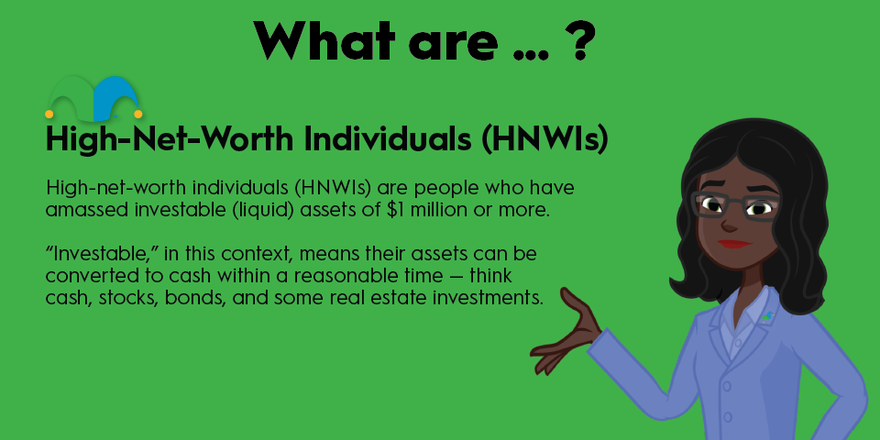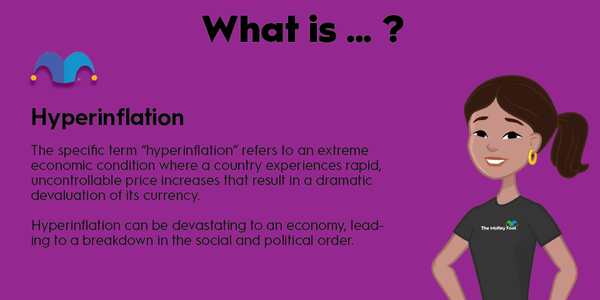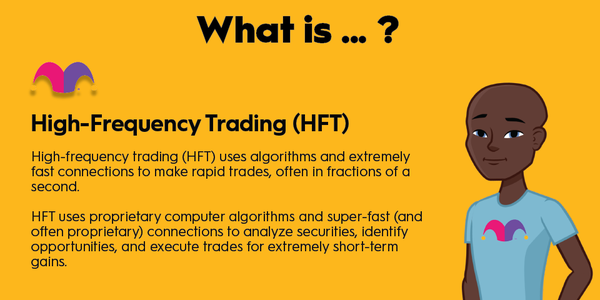High-net-worth individuals (HNWIs) are people who have amassed investable (liquid) assets of $1 million or more. “Investable,” in this context, means their assets can be converted to cash within a reasonable time -- think cash, stocks, bonds, and some real estate investments.

Here we’ll review what high-net-worth individuals are and how they fit into the broader wealth categories.
What is a high-net-worth individual?
What is a high-net-worth individual?
Simply put, a high-net-worth individual (HNWI) is someone who has $1 million or more in liquid assets. Some HNWIs use specialized investment services to manage their wealth; others choose to manage their own money.
While the asset side of the equation is important, a HNWI might also have excessive liabilities exceeding $1 million. Or they might have illiquid assets of more than $1 million but lack investable cash. This is why the distinction is key: You’ll need to have at least $1 million in investable assets to be considered a HNWI.
The standard HNWI scale includes people with liquid assets ranging from $1 million to $5 million. You’re considered a very-high-net-worth individual if you have liquid assets between $5 million and $30 million, and an ultra-high-net-worth individual if you have liquid assets topping $30 million.
Liquidity
Some HNWIs require more complex investment services to manage, preserve, and increase their wealth. Estate and tax planning become significant pieces of the equation once you’ve hit the eight-figure mark in net worth. These people might also receive access to exclusive investment opportunities, like hedge funds and private equity placements.
High-net-worth individuals in context
High-net-worth individuals in context
Depending on the source, somewhere between 8% and 10% of American households have a net worth of $1 million or more. By the statistics alone, it’s no wonder that many people have the goal of becoming a millionaire at some point in their lives.
Some people argue that $1 million isn’t the number it used to be, given the current economic environment. But the reality is that even in times of higher-than-usual inflation and higher-than-comfortable interest rates, being a HNWI still puts you in the top decile (at the worst) of U.S. households in terms of wealth.
Recall again that your level of liquid assets doesn’t tell the whole story. Your financial circumstances also can include core components like
- Your total income
- Your total debt level and the type of debt
- How your assets are invested or concentrated
- Your estimated annual spending
- Your number of dependents
These are only some of the key components that make up your complete financial picture. Your level of liquid assets reveals only one aspect of your situation, so be sure to consider it in the context of the rest of your financial situation.
Do you want to be a high-net-worth individual?
Do you want to be a high-net-worth individual?
It’s no secret that many people want to be HNWIs because of the access and choices it would offer them. Becoming a HNWI often takes years of diligent saving and investing, in addition to a fair amount of good fortune. But it should go without saying that there are many other worthy goals in life.
Again, a HNWI is someone who has amassed $1 million in liquid assets or more. Any number approaching this is clearly a signal of financial success, so appreciate the progress you’ve made, no matter where you are on your net worth journey.

















